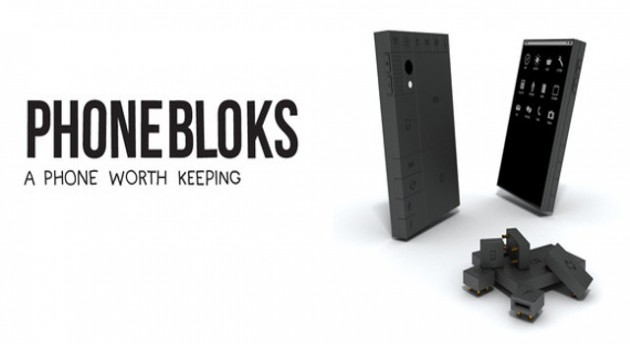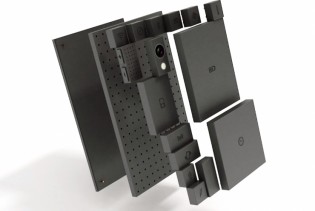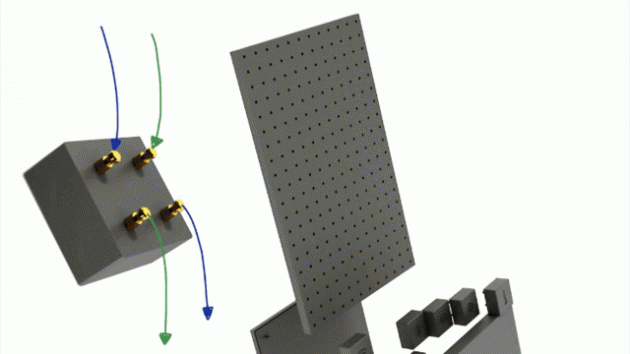Phonebloks is a really nice idea… but it won’t work :’-(
 Phonebloks is a concept mobile phone that has taken social networks by storm in the past few days. Conceived by Dutch designer Dave Hakkens, it is meant as a solution to the e-waste problem generated by a smartphone industry which has shipped more than 225 million units in the last few months alone.
Phonebloks is a concept mobile phone that has taken social networks by storm in the past few days. Conceived by Dutch designer Dave Hakkens, it is meant as a solution to the e-waste problem generated by a smartphone industry which has shipped more than 225 million units in the last few months alone.
It sounds like an excellent, exciting new idea and it certainly has generated a lot of buzz on the interwebs (every single designer friend I have has posted something related on facebook), but unfortunately the bottom line is: it WOULDN’T WORK :’-(
Phonebloks in a nutshell
 Phonebloks is a concept that basically turns your smartphone into a set of LEGO bricks. Each component of the phone (camera, speakers, CPU, memory, screen, etc.) is encased into a single brick with universal connectors in the back, which can be attached to a base in order to create your own phone just with the right components you want. Want more battery life and don’t need a camera? easy! just get rid of the camera brick and get a bigger battery brick that fits the extra space you now have.
Phonebloks is a concept that basically turns your smartphone into a set of LEGO bricks. Each component of the phone (camera, speakers, CPU, memory, screen, etc.) is encased into a single brick with universal connectors in the back, which can be attached to a base in order to create your own phone just with the right components you want. Want more battery life and don’t need a camera? easy! just get rid of the camera brick and get a bigger battery brick that fits the extra space you now have.
The idea behind it, as described by Dave himself is:
“A phone only lasts a couple of years before it breaks or becomes obsolete. Although it’s often just one part that killed it, we throw everything away because it’s almost impossible to repair or upgrade.”
(some of) The pitfalls
Unfortunately, I believe the initial premise is flawed. Smartphones are not being discarded because one component is damaged. Although a phone could be damaged by a single component, most smartphones are being replaced simply because of the perceived life cycle which makes people believe that their phones become obsolete every two years. This is fuelled by the fact that most carriers offer 2 year contracts, and most manufacturers unveil a new flagship phone every year.
 This is of course a load of bull shit from a technical point of view, since most smartphones are still working properly after two years. The thing is, we have to see the smartphone from the full spectrum of design in which products not only play a role as a practical device, but also as items which are intrinsically embedded within the lifestyle of the users. Smartphones for instance also fulfil a social role and they act as a symbol for being hip, being wealthy, being a trend setter, or simply belonging to a group. And this is not only a problem for spoiled teens, or rich first world yuppies, this is something that plays a role in every single product that no longer serves a practical need only, such as clothing or cars. We therefore must take into consideration that people DO want to change their phones every now and then, and not only a component or two.
This is of course a load of bull shit from a technical point of view, since most smartphones are still working properly after two years. The thing is, we have to see the smartphone from the full spectrum of design in which products not only play a role as a practical device, but also as items which are intrinsically embedded within the lifestyle of the users. Smartphones for instance also fulfil a social role and they act as a symbol for being hip, being wealthy, being a trend setter, or simply belonging to a group. And this is not only a problem for spoiled teens, or rich first world yuppies, this is something that plays a role in every single product that no longer serves a practical need only, such as clothing or cars. We therefore must take into consideration that people DO want to change their phones every now and then, and not only a component or two.
From a technical point of view, fully universal components and a universal board to pin them onto is an engineering nightmare. I’m no electrical engineer but I know enough to know that making a connector that can handle every single type of component in a phone regardless of whether it’s meant to handle power, data, sensors or whatever and being able to design a motherboard where components can be pinned anywhere would be incredibly hard, and although not entirely impossible, it would make the components bulky and expensive. Which begs the question, when was the last time you heard someone saying “I wish my phone was more expensive and a bit thicker”?

Another problem involves keeping up with the speed of technical advances and standards. It’s nearly impossible to guarantee that today’s components will work seamlessly with tomorrows technology without possibly crippling the pace of innovation of future technologies. Having a phone that is meant to be changed bit by bit as technology continues evolving and the compatibility issues that this brings with it, instead of being able to leapfrog from generation to generation, can take a toll on the level of innovation which can be achieved.
Apple endured a storm of shit when they decided to change their old iPhone connector during the release of the iPhone 5, as many people said they were only doing it to make all old accessories obsolete so they could sell more new ones. And even though this could have also played a commercial role in the decision, the truth is that the technology of the old connector was already almost 10 years old and it was keeping them from innovating with faster, more reliable connectors that could make the device much more capable. Had they been able to update their technologies before, the pace of innovation could have been much faster.
But still, it is great buzz and food for thought!
The starting point of this concept is a legitimate problem: There is too much e-waste around, and the gazillion smartphones being produced (and discarded!) each year are not helping in the slightest. Therefore it is GREAT for such a concept to gather so much internet buzz because it puts a spot light on the problem, and even though it does not offer a (proper) solution to it, it generates interest and hopefully enough clout from consumers for the mobile industry to start thinking of proper solutions.
Wouldn’t it be great if the Samsungs, Apples, Nokias, et al, could see this community interest as a spark that can kindle a legitimate change in their business practices towards a more sustainable product commercialisation???
Having the big mobile manufacturers approach their industry with Cradle to Cradle in mind would be a great start. Initiatives such as offering a discount on your next device by trading your old one in means that they could be doing their own recycling and reusing of components. This would be specially easy for companies like Apple, which handle a big chunk of their retail directly via their own Apple Stores.
[ Update 1]
Here’s a great response from a Computer Engineering PhD student on why the technical feasibility as described is just not possible:
[ Update 2 ]
Apparently Motorola has been working on a very similar concept design of their own called Project Ara. And although interesting as a concept design, it’s important to know that there are fundamental differences to be identified between what Phonebloks claims and what Motorola seems to be working on. The same PhD student as above, wrote a very thorough analysis on this HERE



